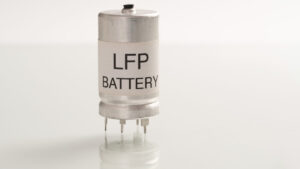This is who’s rocking the phosphate game right now

Pic: John W Banagan / Stone via Getty Images
Long before Nauru and Christmas Island became refugee penal colonies, they supplied some of the purest phosphate in the world to farmers in the remnants of the British empire.
Alongside nitrogen and potash, phosphate from Nauru and Christmas Island (among other sources) helped back a boom in high yielding industrial agriculture.
But sources of rock phosphate in easy jurisdictions were stripped in the 20th century: for example the Christmas Island mine, once Australia’s second largest, is in decline, and Nauru was exhausted of phosphate by 2000 after 80 per cent of its surface was strip mined.
That leaves the newest market for “organic” fertilisers in something of a bind: where will farmers of organic heritage carrots fill their phosphate needs now?
Everyone’s going organic
Organic farming and food is still in vogue and was an estimated $2.4bn industry last year in Australia, according to the 2019 Organic Market Report.
It’s being driven by foreign markets demanding clean green organic food — think Murray River Group’s (ASX:MRG) raisins and milk formula producers Wattle Health (ASX:WHA), Australian Dairy Nutritional (ASX:AHF), and Bubs (ASX:BUB) — and fundamental changes in the way land is managed.
Wide Open Agriculture (ASX:WOA) is not wholly organic but does incorporate some organic farming processes.
What this means is manure and rock “dusts” are coming back into vogue as an agricultural additive.
Of the handful of Australian miners digging up rock phosphate, only Fertoz (ASX:FTZ) is targeting the US organic market, which CCZ Equities reckons gives them quite the competitive advantage there.
Independent market researcher Integer Research forecasts demand generally to increase by a further 25m tonnes by 2025 and 40m tonnes by 2030.
It’s not all rosy
In the past, rock phosphate was used to supercharge inorganic fertilisers like superphosphate — this is what most of the Australian miners are aiming their production for.
To use the ‘organic’ raw form, poses a few problems.
Phosphorus, the element, is not easy for plants to extract from soil generally and they take up between 5-20 per cent. But rock phosphate is one of the least soluble forms of phosphorus and has to be ground up very finely to get the most out of it.
Danakali says little rock phosphate is currently used in agriculture because of low availability of phosphorous, high transport costs, and low crop responses.
- Subscribe to our daily newsletter
- Join our small cap Facebook group
- Follow us on Facebook or Twitter
There are some geopolitics at play as well.
The US Geological Survey and International Fertilizer Development Center estimate the world has a couple of hundred years worth of rock phosphate supply.
But 70 per cent of that — 50bn odd tonnes — is in Morocco and most of that comes from the Bou Craa mine in Western Sahara. Western Sahara is a highly disputed territory: the locals say it belongs to them, Morocco violently disagrees.
China has 5 per cent of the world’s total phosphate reserves but is the largest producer. Syria and Algeria each have 3 per cent of global reserves, followed by Russia, Egypt, Jordan, South Africa and the US, which each have 2 per cent.
But if China is the main miner, they are also seeing deteriorating rock quality and supply, according to business intelligence firm CRU Group, and forecasts suggest they will run out of phosphate at this rate within 35 years.
A third issue is that there isn’t much good quality rock phosphate out there.
Fertoz boss Pat Avery says they’ve locked up the remaining high quality sites in North America, while Centrex says its Ardmore mine has an average grade of 34-35 per cent.
Although demand appears to be strong, there’s still a lot of rock phosphate out there. A report into Centrex Metals (ASX:CXM) last year by Baillieu Holst noted there does appear to be a global surplus at the moment.
The main players
Right now Australia produces phosphate in Queensland and on Christmas Island.
The Christmas Island mine is now run by CI Resources (ASX:CII), which has been told by the Australian government that it can’t have access to an extra 130 hectares of unallocated Crown land on Christmas Island to extend its mining operations from the mid-2020s to the early 2030s.
Others in the phosphate game are Avenira (ASX:AEV), Centrex Metals (ASX:CXM), and Fertoz.
Last week the fourth ASX phosphate player, Verdant Minerals, was delisted after being taken over by Washington H. Soul Pattinson and CD Capital Natural Resources Fund.
Verdant Minerals received environmental permission in October last year for its Ammaroo phosphate project, set to be one of the largest in Australia, but was quickly snapped up by the Australian investment company and the London private equity firm after that.
Avenira has a big phosphate mine called Baobab in Senegal, which they said they got first production out of in 2016 but are yet to make any money from.
It also owns the Wonarah phosphate project in the Northern Territory, “one of the largest known phosphate deposits in Australia”, with a measured and indicated resource of 300Mt at 18.2 per cent phosphate pentoxide.
The problem is, Avenira is running out of money. It’s currently suspended as it hunts for more cash.
It got $1m in cash from its three major shareholders in May, who also promised a month later to lend the Senegal subsidiary $140,000.
But the ASX-listed parent only has $300,000 left in the kitty, as of this month, and it needs $14m to get a final investment decision under way for the Baobab mine by 2020. It’s talking to African banks for an emergency $12m to stay afloat.
Centrex Metals owns the Ardmore phosphate rock project in Queensland, a mine it plans to have in early production by the middle of this year.
It’s estimating a full planned production of 800,000 wet tonnes per annum, across a 10 year mine life is being targeted for the project, which would give it a short payback period of just under two years with an internal rate of return (IRR) of 63 per cent.
Phosphate from the latter two is destined for the superphosphate or inorganic fertiliser market.
Fertoz is the only one working to sell organic rock phosphate. It has four sites in Canada, the US and Mexico, which need to go through a two year organic certification process in order to sell into that market.
If the others in the sector must find regular offtakers, Fertoz is faced with the challenge of setting up new supply chains for the organic market.
Managing director Pat Avery says they’re slowly pulling this together, with cash receipts starting to tick up in the last six months.
At Stockhead, we tell it like it is. While Centrex Metals is a Stockhead advertiser, it did not sponsor this article.
Related Topics

UNLOCK INSIGHTS
Discover the untold stories of emerging ASX stocks.
Daily news and expert analysis, it's free to subscribe.
By proceeding, you confirm you understand that we handle personal information in accordance with our Privacy Policy.








